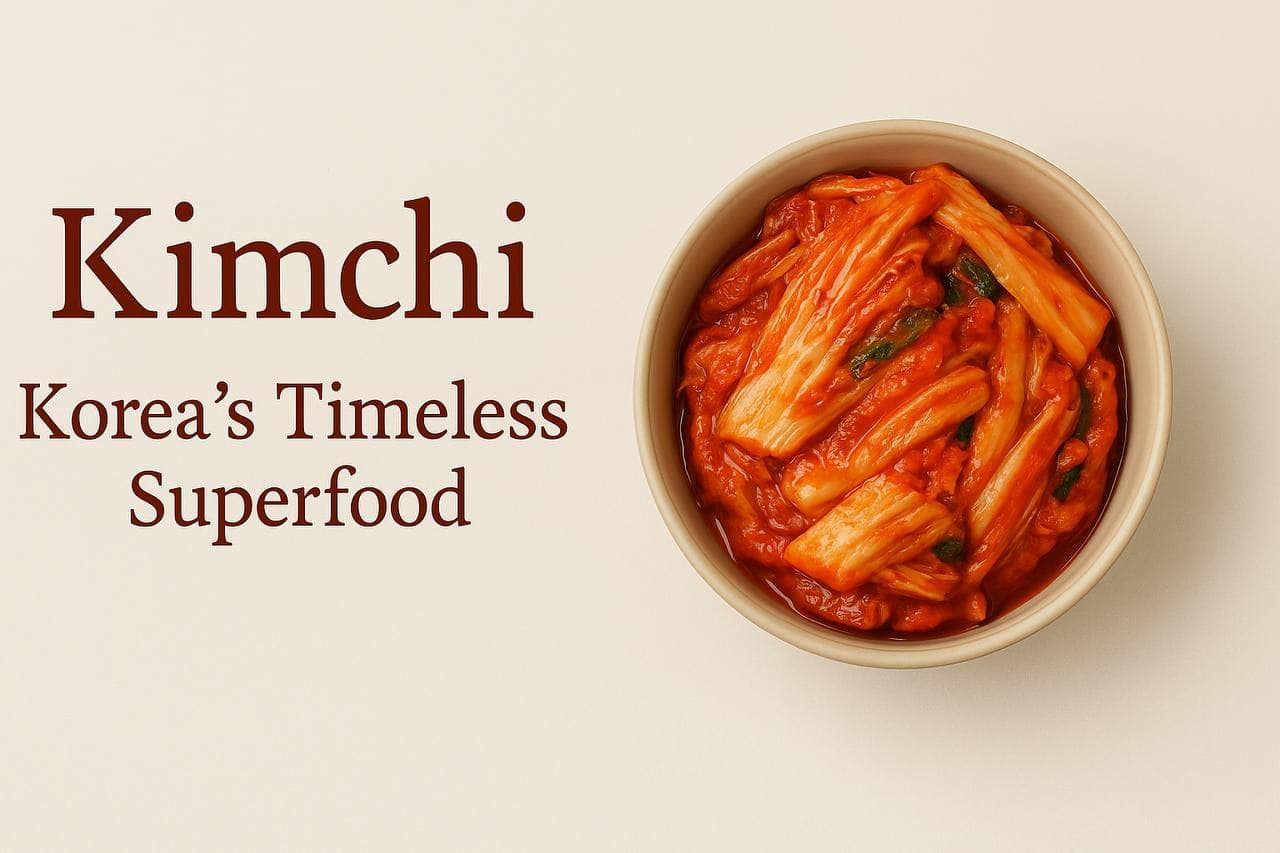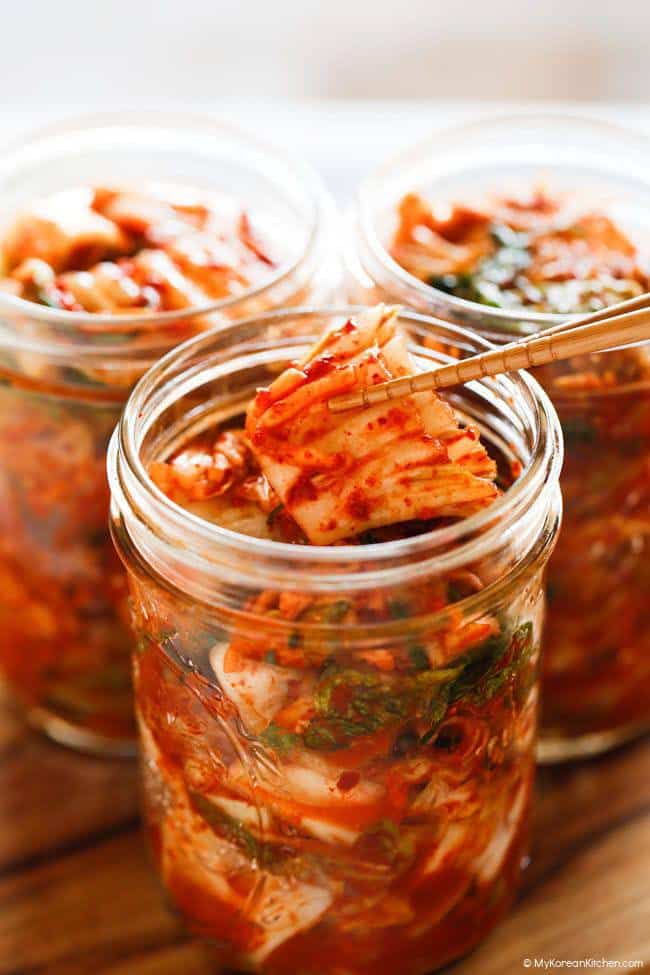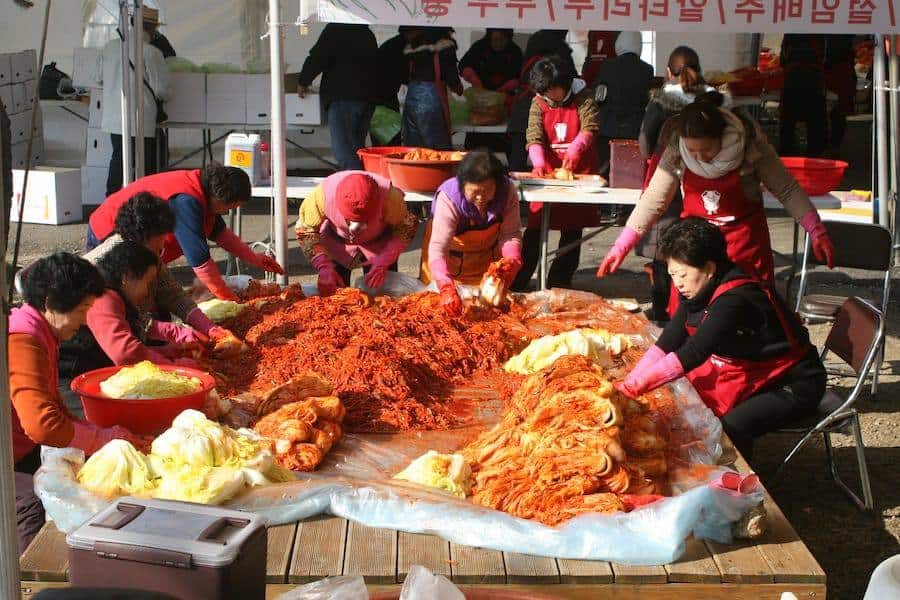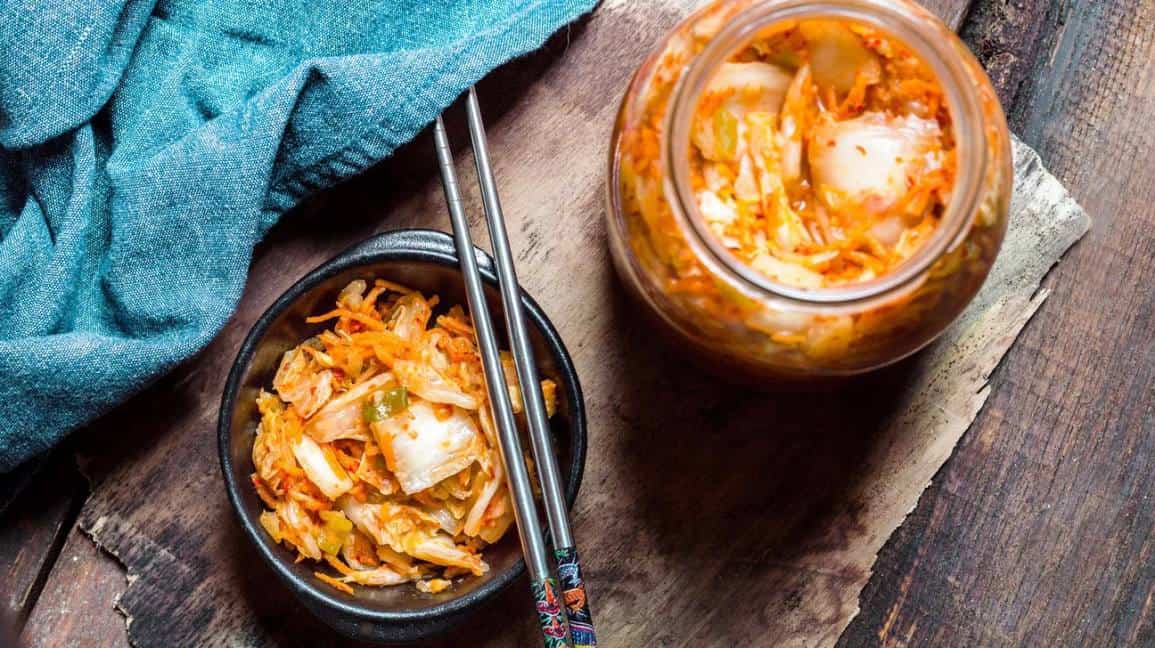
Kimchi (김치), a traditional Korean side dish known as banchan (반찬) consisting of salted and fermented vegetables, most often napa cabbage or Korean radish. Different regions and seasons in Korea also influence the ingredients and flavor profiles of kimchi. For example, kimchi from the southern regions tends to be spicier and saltier, while northern varieties are milder and less salty. A wide selection of seasonings are used, including gochugaru (Korean chili powder), spring onions, garlic, ginger, and jeotgal.
Kimchi is also used in a variety of soups and stews, such as kimchi jjigae (kimchi stew) and kimchi bokkeumbap (kimchi fried rice). It is rich in probiotics due to the fermentation process, which promotes gut health and boosts the immune system.The fermentation process can take anywhere from a few days to several months, depending on the temperature and ingredients used. Kimchi is a staple food in Korean cuisine and is eaten as a side dish with almost every Korean meal.
History behind kimchi :

Kimchi, a staple of Korean cuisine, boasts a history spanning over 3,000 years. Its origins date back to ancient agricultural societies that developed fermentation techniques to preserve vegetables during harsh winters.
- Initially, kimchi was a simple salted and fermented vegetable dish, often made with radish and cucumber, as chili peppers were not yet introduced.
- During the Goryeo Dynasty (918–1392), additional ingredients such as garlic, ginger, and fermented fish sauce (jeotgal) were incorporated, enhancing both flavor and nutrition.
- The most significant transformation occurred during the Joseon Dynasty (1392–1897) when chili peppers, brought to Korea in the 17th century through Portuguese traders, became a key ingredient, giving kimchi its iconic red color and spicy taste.
The tradition of "Kimjang" (김장), a communal activity where families and neighbors gather to prepare large batches of kimchi for the winter, also emerged during this period. Traditionally, kimchi was stored in earthenware pots called "onggi" and buried underground to regulate temperature during fermentation. This practice ensured the preservation of nutrients and taste throughout the year. In modern times, specialized kimchi refrigerators have replaced traditional methods, but kimchi remains deeply rooted in Korean culture, representing resilience, community, and tradition.
Ingredients for Traditional Kimchi:
- Main Vegetable:Napa cabbage,Korean radish,Cucumber
- Seasonings and Spices:Gochugaru (Korean red chili pepper flakes),Garlic,Ginger, Green onions,Salt,Sugar.
- Fermented Ingredients:Jeotgal (fermented seafood, such as shrimp or anchovy sauce),Fish sauce
- Additional Ingredients:Carrots,Korean pear,Onion

Varieties of kimchi -
Kimchi stands as one of the most iconic staples of Korean cuisine. The term "Kimchi" refers to fermented vegetables, typically seasoned with salt and various spices.
Over time, new variations of kimchi have emerged, with flavors that differ based on regional influences and seasonal ingredients. Kimchi can be classified based on its primary ingredients, region, or season. The significant temperature contrast between Korea's northern and southern regions further contributes to the diversity of kimchi. To date, there are over 180 recognized varieties of kimchi.
The most popular types of kimchi include:
- Baechu-kimchi (배추김치): Spicy napa cabbage kimchi made from whole cabbage leaves
- Baechu-geotjeori (배추겉절이): Unfermented napa cabbage kimchi
- Bossam-kimchi (보쌈김치): Wrapped kimchi
- Baek-kimchi (백김치): White kimchi, made without chili pepper
- Dongchimi (동치미): A non-spicy, watery kimchi
- Nabak-kimchi (나박김치): A mildly spicy, watery kimchi.
Traditionally, the art of kimchi-making was passed down from mothers to daughters, serving as a way to prepare them for marriage. However, with advancements in technology and the rise of social media, people worldwide can now easily access kimchi recipes and master the craft themselves.
Nutruitional value -
Kimchi is made of various vegetables and contains a high concentration of dietary fiber, while being low in food energy. The vegetables used in kimchi also contribute to intake of vitamin A, thiamine (B1), riboflavin (B2), calcium, and iron.
Nutrients | Per 100g | Nutrients | Per 100g |
Food energy | 32 | Moisture | 88.4g |
Crude protein | 2.0g | Crude lipid | 0.6g |
Total sugar | 1.3g | Crude fiber | 1.2g |
Crude ash | 0.5g | Calcium | 45mg |
Phosphorus | 28mg | Vitamin A | 492 IU |
Vitamin B¹ | 0.03mg | Vitamin B² | 0.06mg |
Niacin | 2.1mg | Vitamin C | 21mg |

Health Benefits of Kimchi:
1. Rich in Probiotics: Supports gut health and digestion.
2. Boosts Immunity: High in antioxidants and vitamins, especially Vitamin C.
3. Low in Calories: Ideal for weight management.
4. Anti-inflammatory Properties: Contains bioactive compounds that reduce inflammation.
5. Heart Health: Helps lower cholesterol and blood pressure.
6. Improves Skin Health: Rich in vitamins and antioxidants that promote healthy skin.
Conclusion
Kimchi is more than just a side dish; it is a representation of Korean history, culture, and tradition. From its ancient roots to its global recognition today, kimchi remains an essential part of Korean identity.
With its unique taste, rich nutrients, and health benefits, kimchi continues to be loved not only in Korea but around the world.

